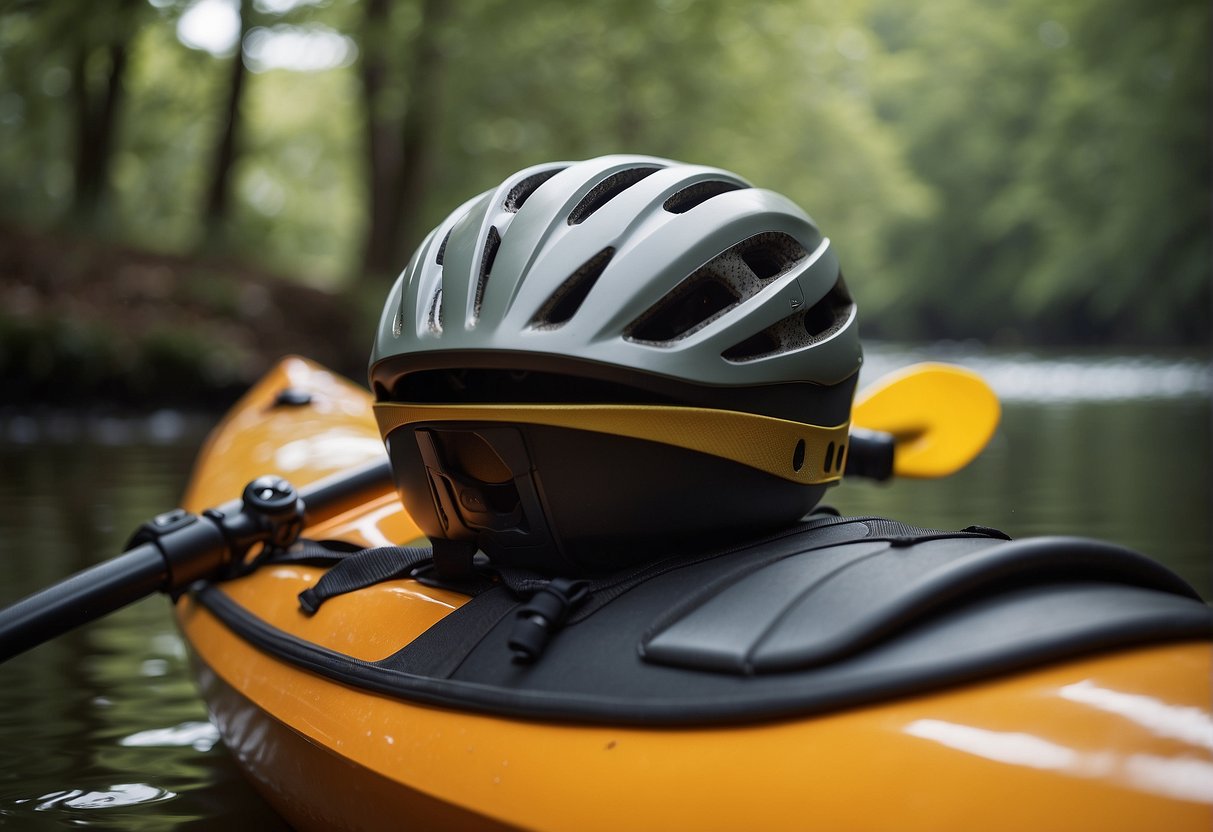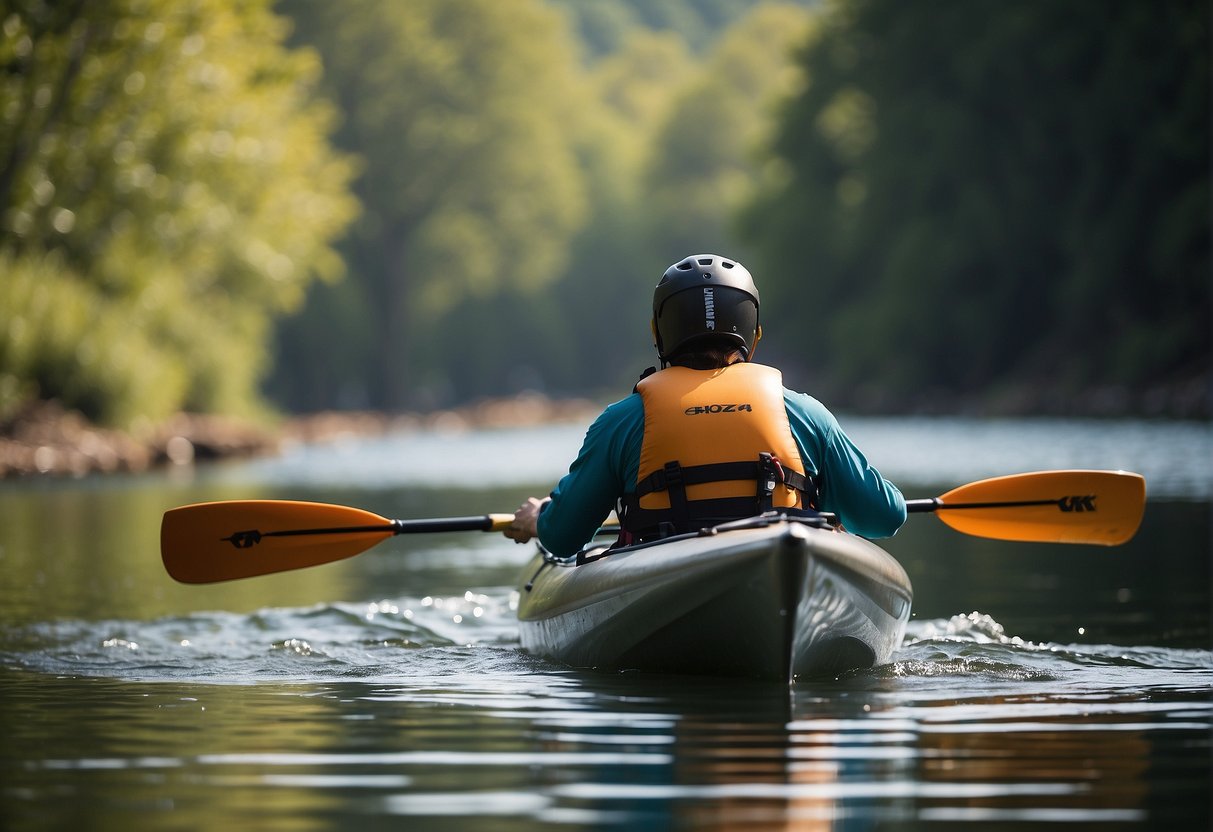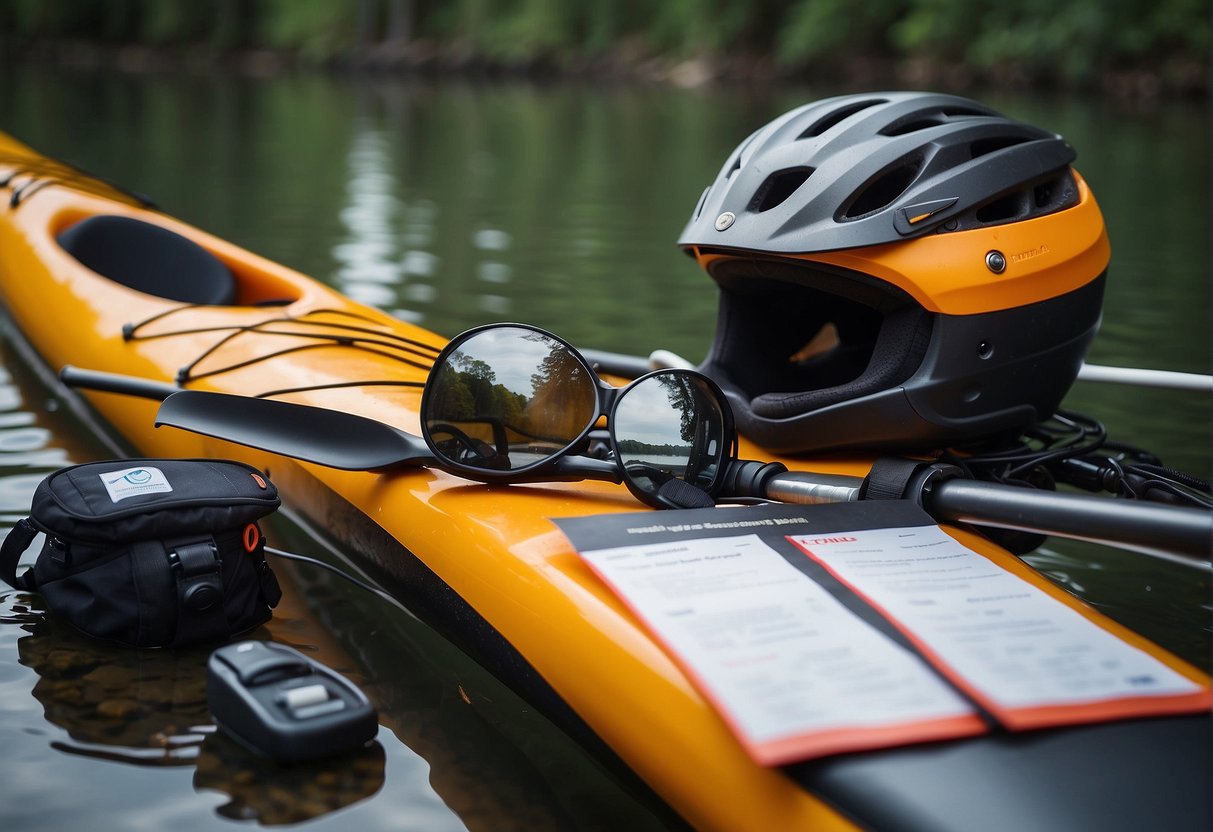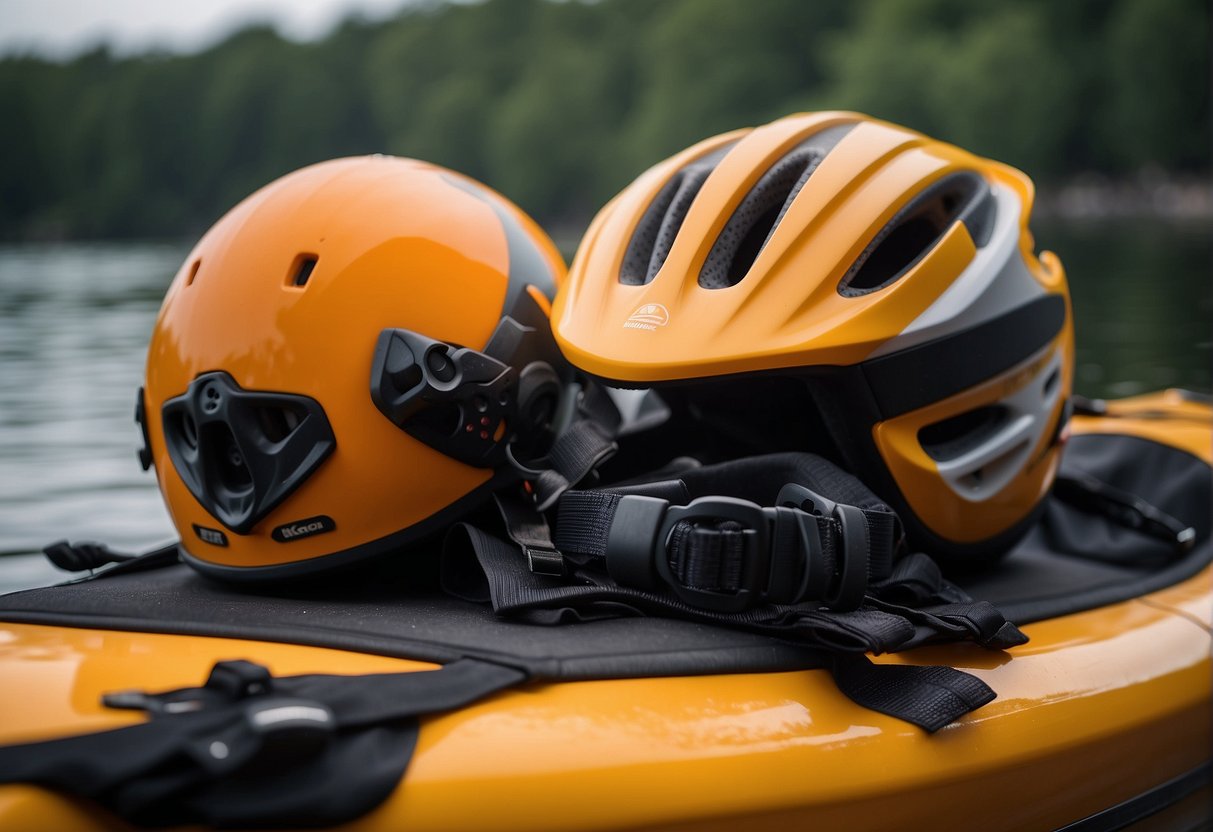If you’re planning to go kayaking, you’re probably wondering if you can use a bike helmet for kayaking. The short answer is no, you shouldn’t use a bike helmet for kayaking. While both helmets are designed to protect your head, they have different shapes, coverage, and composition. A bike helmet is not designed to protect your head from the impact of water or rocks, which are common hazards when kayaking.

Kayaking helmets are specifically designed to protect your head from the impact of water and rocks. They are made of lightweight materials that can withstand the impact of water and rocks. They also have a different shape than bike helmets, with a wider coverage that protects your head from different angles. Kayaking helmets are also designed to stay in place even in turbulent water, while bike helmets are not.
Overall, it’s important to wear the right helmet for the activity you’re doing. While a bike helmet may seem like a good substitute for a kayaking helmet, it’s not worth risking your safety. Kayaking helmets are specifically designed to protect your head from the hazards of kayaking, and using a bike helmet instead could result in serious injury.
Understanding Helmet Types for Different Sports

Key Differences Between Bike and Kayaking Helmets
When it comes to helmets, there are different types of helmets for different sports. While bike helmets are designed to protect your head during bike rides, kayaking helmets are specifically designed to protect your head during kayaking. There are several key differences between bike and kayaking helmets that make them unsuitable for each other. Bike helmets are designed to be lightweight, aerodynamic, and well-ventilated, while kayaking helmets are designed to be sturdy, impact-resistant, and well-padded.
Bike helmets are usually made of a hard outer shell with a foam liner to absorb impact. They are designed to protect your head against falls from a height of up to 1.5 meters. Kayaking helmets, on the other hand, are made of a hard outer shell with a thick foam liner. They are designed to protect your head against impacts from rocks, waves, and other hard objects in the water.
Types of Kayaking Helmets
There are three types of kayaking helmets available: half-cut, full-cut, and full-face. Half-cut helmets are suitable for various water sports like kayak touring, light whitewater, and sea kayaking. They provide protection to the top and sides of your head, but not to your face or chin.
Full-cut helmets offer more protection than half-cut helmets by covering the back of your head, as well as the top and sides. They are suitable for more advanced kayaking, such as whitewater kayaking.
Full-face helmets provide the most protection by covering your entire head, including your face and chin. They are suitable for extreme kayaking, such as waterfall kayaking.
In summary, it is important to wear the right type of helmet for the sport you are participating in. Bike helmets are not suitable for kayaking, and kayaking helmets are not suitable for biking. When kayaking, it is important to wear a kayaking helmet that is appropriate for the level of kayaking you are doing.
Assessing the Need for Protection in Water Sports

When it comes to water sports, the potential for danger is ever-present. From rocks and branches to whitewater and dangerous currents, kayaking can be a risky activity. As such, it is essential to have the right safety gear, including a well-fitting helmet.
Potential Hazards in Kayaking
Kayaking is a sport that involves navigating through water, which can be unpredictable and dangerous. Hazards such as rocks, branches, and rapids can cause serious injuries to the head. In fact, head injuries are one of the most common injuries sustained by kayakers.
To protect yourself from these dangers, it is important to wear a helmet that is specifically designed for water sports. A bike helmet, for example, is not suitable for kayaking as it does not provide the same level of protection as a water sports helmet.
Importance of a Well-Fitting Helmet
A well-fitting helmet is essential for protecting your head during kayaking. A helmet that is too loose or too tight can be dangerous as it may not provide adequate protection or may even fall off during an accident.
When choosing a helmet, it is important to consider the fit, retention, buoyancy, and impact resistance. Water sports helmets are designed to be buoyant, which means that they will float in water. This is important as it makes it easier to retrieve the helmet if it falls off during an accident.
In conclusion, protection is key when it comes to water sports. A well-fitting helmet is essential for protecting your head from potential hazards and injuries. Be sure to choose a helmet that is specifically designed for water sports and that fits properly to ensure maximum protection.
Helmet Design and Features for Kayaking
When choosing a helmet for kayaking, it is important to consider the design and features that will provide the best protection and comfort. Here are some key factors to keep in mind:
Comfort and Fit
A well-fitting helmet is crucial for comfort and safety. Look for a helmet that has adjustable straps and padding that can be customized to fit your head. Some helmets even offer custom fitting options, which can help ensure a perfect fit. Keep in mind that a helmet that is too tight or too loose can be uncomfortable and potentially dangerous.
Ventilation and Drainage
Kayaking can be a sweaty sport, especially in warmer weather. Look for a helmet with good ventilation to help keep you cool and comfortable. Some helmets also have drainage channels to help keep water from pooling inside the helmet.
Visibility and Accessories
Some helmets come with built-in visors or other accessories that can improve visibility and protect your face from the sun. Consider whether you want a helmet with these features, or if you would prefer to wear a separate visor or sunglasses.
When it comes to color, choose a helmet that is bright and visible in the water. This can help make it easier for other boaters to see you, which is especially important in areas with heavy boat traffic.
Construction and Sizing
Kayaking helmets are typically made from lightweight materials like ABS plastic or carbon fiber. Look for a helmet that is sturdy and well-constructed, with a secure chin strap and a snug fit.
Sizing can vary between brands, so be sure to measure your head and consult the manufacturer’s sizing chart before making a purchase. Keep in mind that a helmet that is too small or too large can be uncomfortable and potentially unsafe.
Overall, a well-designed kayaking helmet should provide a comfortable, secure fit, good ventilation and drainage, and features that improve visibility and protect your face from the sun. With these factors in mind, you can choose a helmet that will keep you safe and comfortable on the water.
Safety Standards and Gear Maintenance

Certification and Safety Ratings
When it comes to kayaking, safety should always be your top priority. That’s why it’s important to choose a helmet that meets safety standards and has the appropriate certification. The most common certification for kayaking helmets is the CE EN 1385 standard, which ensures that the helmet meets certain safety requirements.
It’s important to note that bike helmets are not certified for kayaking, and using them for this purpose can put you at risk of serious injury. Bike helmets are designed for a different type of impact and do not provide adequate protection for kayaking. So, always choose a helmet that is specifically designed for kayaking.
Caring for Your Kayak Helmet
To ensure that your kayak helmet lasts as long as possible, it’s important to take proper care of it. Here are some tips for maintaining your helmet:
- Clean your helmet regularly with mild soap and water. Avoid using harsh chemicals or solvents, as they can damage the helmet’s shell and liner.
- Store your helmet in a cool, dry place away from direct sunlight and heat sources.
- Avoid dropping or hitting your helmet, as this can damage the shell and compromise its ability to protect you.
- Check your helmet regularly for signs of wear and tear, such as cracks or dents. If you notice any damage, replace your helmet immediately.
- Follow the manufacturer’s instructions for replacing your helmet. Most helmets have a lifespan of around 3-5 years, depending on the type of helmet and how well it is cared for.
By following these tips, you can help ensure that your kayak helmet remains in good condition and provides you with the protection you need while kayaking. Remember, your safety is always the most important consideration when choosing and maintaining your kayaking gear.
Making the Right Choice for Your Safety

When it comes to kayaking, selecting the appropriate helmet is crucial for your safety. While bike helmets may seem like a viable option, it is important to understand that they are not designed for water sports and may not provide adequate protection. Instead, you should invest in a proper kayak helmet that is designed to protect your head from impact in a fall or accident.
Selecting the Appropriate Helmet for Kayaking
When selecting a kayak helmet, there are several factors to consider. Firstly, you need to ensure that the helmet fits properly. A helmet that is too loose or too tight can compromise its effectiveness and put you at risk of injury. You should also consider the level of protection provided by the helmet. A good kayak helmet should provide full coverage to the head, including the back, sides, and forehead.
Another important factor to consider is the type of kayaking you will be doing. If you are planning to do more extreme water sports, such as whitewater kayaking, you may want to invest in a helmet with additional features such as a face guard or ear protection. However, for most recreational kayaking, a standard kayak helmet should suffice.
When to Replace Your Helmet
Like all sports equipment, kayak helmets have a lifespan and should be replaced periodically. Over time, the foam inside the helmet can break down and lose its ability to absorb impact. It is recommended that you replace your kayak helmet every three to five years, or sooner if it has been involved in an accident.
In addition to your kayak helmet, you should also wear a personal flotation device (PFD) while kayaking. A PFD is designed to keep you afloat in the water and can also provide additional protection to your chest and back in the event of an accident.
In conclusion, selecting the appropriate helmet for kayaking is crucial for your safety. While bike helmets may seem like a viable option, they are not designed for water sports and may not provide adequate protection. When selecting a kayak helmet, ensure that it fits properly, provides full coverage, and is appropriate for the type of kayaking you will be doing. Remember to replace your helmet periodically and always wear a PFD while kayaking.